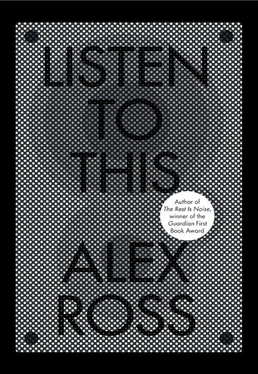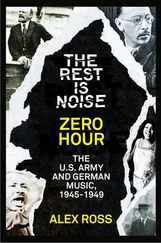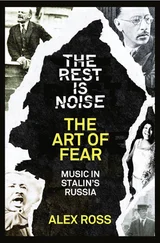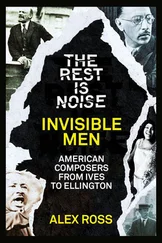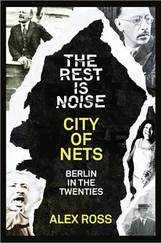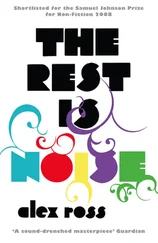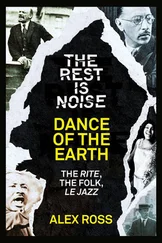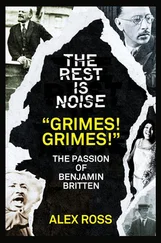The origins of the riff are obscure. It seems to have deep roots in black music, reaching back through ragtime to the sketchily documented repertories of nineteenth-century African-American song. It might even be related to slithery chromatic lines that have been recorded in chants of the Ewe and Yoruba peoples, in West Africa. Although it holds to the classic devil’s-staircase shape, it has little apparent connection to the ostinato laments of previous eras: it’s a decorative element, not a bass line. And it gives off a different vibe, in keeping with the emotional complexity of blues form. A blues is sensual, knowing, tough; it’s full of resilience, even as it heeds the power of fate. The gesture of lament annuls itself and engenders its opposite. This is the subtext of Duke Ellington’s pathbreaking 1935 piece Reminiscing in Tempo, a thirteen-minute jazz fantasia propelled by a short chromatic ostinato. It was written in the wake of the death of the composer’s mother, but it keeps sorrow at bay, ending in a jaunty, urbane mood. The trudging ostinato becomes a walking, dancing bass.
Blues chromaticism entered the American mainstream through the hot jazz of the Roaring Twenties. It was also a favorite tool in the workshops of Tin Pan Alley: Gershwin loved to introduce half-step motion into the inner voices of songs like “Someone to Watch Over Me.” A hint of the descending chromatic bass shadows the opening of Richard Rodgers’s “My Funny Valentine.” Of course, Tin Pan Alley writers, many of them from Russian-Jewish backgrounds, had multiple sources for these tricks of the trade; they drew liberally on late-Romantic classical music and also on Yiddish song. One way or another, the sighing chromatic line became so widespread as a sign of worldly-wise sophistication that it turned into a journeyman cliché. Sometimes, though, it came bearing a more urgent message. When Frank Sinatra began making downcast concept albums in the later 1950s— In the Wee Small Hours, Only the Lonely, No One Cares, and other studies in Cold War melancholia—he seemed to require morose chromatic lines to set the tone. A lamenting pizzicato bass prowls through Sinatra’s “Angel Eyes,” whose Scotch-soaked emotional state goes from the vengeful to the suicidal (“Excuse me while I disappear”).
Sinatra’s nocturnal ballads of the fifties forecast a weird and wonderful twist of musical history: the return, circa 1965, of the chromatic basso lamento, in strict, almost neo-Baroque guise. Why it came back is difficult to explain. For one thing, the American folk-music revival of the fifties gave new life to ancient ballad forms, which depended on strophic repetition. Also, Baroque music was much in vogue in the later fifties, with I Musici’s recording of Vivaldi’s Four Seasons and Glenn Gould’s account of the chaconnelike Goldberg Variations selling in mass quantities. And perhaps Brazilian bossa nova played an assisting role; as Peter Williams points out, in his wide-ranging survey The Chromatic Fourth, liquid chromatic lines course through Antônio Carlos Jobim’s “Corcovado,” also known as “Quiet Nights of Quiet Stars.”
Whatever the reason, by the mid-sixties the lamento bass was again the rage. You hear it in “Chim Chim Cher-ee,” the waltzing chimney-sweep song in Richard and Robert Sherman’s movie musical Mary Poppins. You hear it also in “Michelle,” on the Beatles’ Rubber Soul, and in various later Beatles songs. It sounds seven times in Bob Dylan’s psychedelic manifesto “Ballad of a Thin Man,” setting up the refrain “Something is happening here / But you don’t know what it is / Do you, Mr. Jones?” (The song’s dramatis personae, consisting of one-eyed midgets, circus geeks, and sword swallowers in high heels, vaguely resembles the guest list for the wedding of Almadán, as described in Juan Arañés’s “Un sarao de la chacona.”) The rock scholar Walter Everett has catalogued dozens of chromatic basses in sixties and seventies pop: a peculiar playlist could be assembled from the likes of “How Could I Be Such a Fool?” “Can’t Take My Eyes off You,” “My Way,” “Hooked on a Feeling,” “Time in a Bottle,” and the Eagles’ “Hotel California.” As Everett notes, the last song is fittingly set in a decadent Spanish-mission town, by the side of a desert highway.
It fell to Led Zeppelin, the behemoth hard-rock band of the seventies, to perfect the rock Baroque. Dylan and the Beatles may have won the plaudits of the intellectuals, but Led Zeppelin launched a no less ambitious raid on music history, commandeering rock, folk music, Delta blues, Indian and other non-Western music, and smatterings of classical tradition. “Babe I’m Gonna Leave You” and “Stairway to Heaven” both take off from meticulous finger-picking exercises for semi-classical guitar, with descending chromatic lines interwoven; washes of Bachian organ playing give a churchy aura to “Your Time Is Gonna Come” and “Since I’ve Been Loving You.” Several of the band’s weightiest creations rest on artfully repeating bass lines: “Kashmir” is built on a riff that climbs step by chromatic step.
Led Zeppelin’s early magnum opus was “Dazed and Confused,” a tormented love song that Jimmy Page, the band’s fleet-fingered, mildly satanic guitarist, first started playing when he was in the Yardbirds. Page borrowed many elements of the piece from a New York singer-songwriter named Jake Holmes, who included a track with the same name on his 1967 album “The Above Ground Sound” of Jake Holmes. Holmes’s song is anchored in consecutive chromatic descents; they were the work of an itinerant bass guitarist named Rick Randle, whom Holmes later described as “absolutely stone, raving mad,” and who was last reported living in Utah with a witch.

In the Led Zeppelin version, which appeared on the band’s debut album of 1969, John Paul Jones gave the bass line a forbidding, organlike sound—the Delta blues riff monumentalized. In recordings from the band’s stadium tours of the early seventies, where the song stretches on for half an hour or more, the bass motto undergoes ostentatious transformations, sometimes shimmering on Page’s bowed guitar, sometimes shrieking in the high falsetto zone of Robert Plant’s voice. For long stretches, the bass falls silent while singer and guitarist call out to each other, like wanderers lost in a desolate landscape. Finally, in a climactic passage, the theme is thundered out on guitar and bass in tandem, saturating the musical space.
When the chacona first surfaced, at the end of the sixteenth century, it promised an upending of the social order, a liberation of the body. The same outlaw spirit animates modern rock and pop: the swirl of a repeating bass line allows a crowd of dancing fans to forget, for a little while, the linear routines of daily life. When Frescobaldi and Bach recast the dance as a stern, inward-turned form, bending it toward lament, they hinted at a different sort of freedom, that of the individual defining himself in opposition to the mass. “Dazed and Confused,” in its inner sections, implies a similar quest for self: the raw drive of rock and roll gives way to spacey variations. It’s a big, brash rock anthem at heart, but, just as the dance abides in Bach’s chaconne, the lament lingers in the rock arena. Above all, the song demonstrates how the same deep musical structures keep materializing across the centuries. If a time machine were to bring together some late-sixteenth-century Spanish musicians, a continuo section led by Bach, and players from Ellington’s 1940 band, and if John Paul Jones stepped in with the bass line of “Dazed and Confused,” they might, after a minute or two of confusion, find common ground. The dance of the chacona is wider than the sea.
Читать дальше
